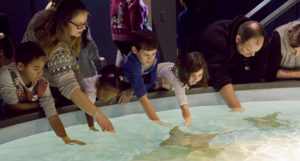Last week, news reports and social media buzzed with the stories of two zoo incidents. In North Carolina, a young worker was killed by a lion that had escaped his enclosure and, at a zoo in Florida, a toddler suffered minor injuries after falling into the rhino enclosure during a close-encounter attraction. Many people are aware of the cruelty of circuses and roadside zoos, where captive wild animals are drugged, forced to perform, and confined to tiny cages to languish in abysmal conditions, and which are, to no surprise, frequent sites of wild animal escapes and attacks. But, both of last week’s incidents took place at facilities with good public reputations – after all, the North Carolina zoo, called Conservators’ Center, partners with North Carolina State University and the Florida facility, Brevard Zoo, is accredited by the Association of Zoos and Aquariums (AZA). So, what happened?
These incidents, and other, similar, instances of animal attacks, escapes, or members of the public entering animal enclosures at well-known facilities reveal the cracks in “the zoo illusion” – the notion that large zoo facilities exist purely and solely for educational and conservation purposes and that getting close to animals in these settings is always safe.
If you visit the websites of the two zoos involved in last week’s incidents, you will find them full of language about education and conservation. The Conservators’ Center’s stated mission is to strive “to provide a premiere educational experience” and boasts a 20 year history of supporting “wildlife education and conservation.” Even its name is all about conservation! Likewise, the Brevard Zoo’s mission is “Wildlife conservation through education and participation.” Read the mission statements of any major American zoo and you will see a similar theme: the mission is to promote education and conservation. While some zoos may take in animals that would otherwise not have a place to go, and some may contribute to conservation, the notion that these facilities exist just for educational and conservation purposes, or even that there is a significant value to the conservation and education aspects, is an illusion; entertainment is the main, if unstated, part of a zoo’s mission.
Entertainment is the main, if unstated, part of a zoo’s mission.

Wild animals are just that – wild – and will act instinctively if they are frightened or feel threatened.

Wildlife belongs in the wild, not captive in zoos or theme parks, and not forced to entertain or “educate” us humans. Please don’t fall prey to the illusion of educational value of zoos, and please do not support close contact experiences – for your safety and for the animals’ well-being.
Keep Wildlife in the Wild,
Angela

 Dear Reader,
Dear Reader,